Related Research Articles

Dallas is a city in the U.S. state of Texas and the most populous city in the Dallas–Fort Worth metroplex, the most populous metropolitan area in Texas and the 4th most populous metropolitan area in the United States at 7.5 million people. It is the most populous city in and seat of Dallas County with portions extending into Collin, Denton, Kaufman, and Rockwall counties. With a 2020 census population of 1,304,379, it is the ninth-most populous city in the U.S. and the third-most populous city in Texas after Houston and San Antonio. Located in the North Texas region, the city of Dallas is the main core of the largest metropolitan area in the Southern United States and the largest inland metropolitan area in the U.S. that lacks any navigable link to the sea.

Grapevine is a city located in northeast Tarrant County, Texas, United States, with minor portions extending into Dallas County and Denton County. The population was 51,226 at the time of the 2020 census, up from 46,334 in the 2010 census. The city is located in the Mid-Cities suburban region between Dallas and Fort Worth and includes a larger portion of Dallas/Fort Worth International Airport than other cities.

The Dallas–Fort Worth metroplex, officially designated Dallas–Fort Worth–Arlington by the U.S. Office of Management and Budget, is the most populous metropolitan statistical area in the U.S. state of Texas and the Southern United States, encompassing 11 counties. Its historically dominant core cities are Dallas and Fort Worth. It is the economic and cultural hub of North Texas. Residents of the area also refer to it as DFW, or the Metroplex. The Dallas–Fort Worth–Arlington metropolitan statistical area's population was 7,637,387 according to the U.S. Census Bureau's 2020 census, making it the most populous metropolitan area in both Texas and the Southern United States, the fourth-largest in the U.S. and the tenth-largest in the Americas. In 2016, the Dallas–Fort Worth metroplex had the highest annual population growth in the United States.

White Rock Creek is a 30 miles (48 km) creek occupying a chain of four sub-watersheds within the Trinity River watershed. From its source near Frisco, Texas at 33°07′54″N96°46′50″W, this creek runs south-by-south-east through suburban Dallas for 23.5 miles (37.8 km) where it widens into White Rock Lake, then continues south for another 8 miles (13 km) to its mouth on the Trinity River, of which it is a major tributary.
The Trinity River Project is a public works project undertaken in the 2000s in the city of Dallas, Texas, United States. Its goal is to redevelop the Trinity River. The project aims to turn the river's path into a collection of sports fields, trails, nature centers, and recreational opportunities. At 10,000 acres (4,000 ha), it is one of the larger urban parks in the United States.
This article is about transportation systems in and around Dallas, Texas (USA).
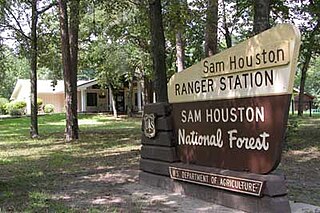
The Sam Houston National Forest, one of four National Forests in Texas, is located 50 miles north of Houston. The forest is administered together with the other three United States National Forests and two National Grasslands located entirely in Texas, from common offices in Lufkin, Texas. The units include Angelina, Davy Crockett, Sabine, and Sam Houston National Forests, plus Caddo National Grassland and Lyndon B. Johnson National Grassland. There are local ranger district offices located in New Waverly. It is located in portions of three Texas counties including Montgomery, San Jacinto, and Walker.
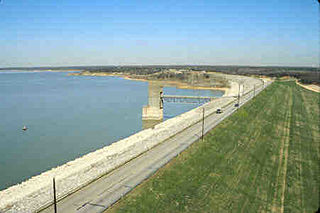
Grapevine Lake is a reservoir located in the North Texas region, about 20 mi (32 km) northwest of Dallas and northeast of Fort Worth. It was impounded in 1952 by the US Army Corps of Engineers when they dammed Denton Creek, a tributary of Trinity River.
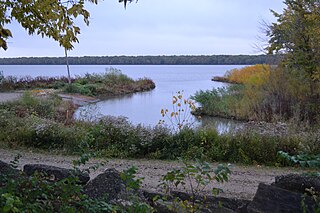
Marshall State Fish and Wildlife Area is an Illinois state park on 6,000 acres (2,400 ha) in Marshall County, Illinois, United States.

According to the California Protected Areas Database (CPAD), in the state of California, United States, there are over 14,000 inventoried protected areas administered by public agencies and non-profits. In addition, there are private conservation areas and other easements. They include almost one-third of California's scenic coastline, including coastal wetlands, estuaries, beaches, and dune systems. The California State Parks system alone has 270 units and covers 1.3 million acres (5,300 km2), with over 280 miles (450 km) of coastline, 625 miles (1,006 km) of lake and river frontage, nearly 18,000 campsites, and 3,000 miles (5,000 km) of hiking, biking, and equestrian trails.

The Spring Creek Forest Preserve is a city-owned nature preserve located in Garland, a suburb of Dallas, Texas.
The Mead Wildlife Area is a state wildlife area covering over 33,000 acres (130 km2) in central Wisconsin. It includes portions of Marathon, Portage, and Wood counties. It is managed by the Wisconsin Department of Natural Resources (WDNR). The Area is commonly referred to as "the Mead". Five WDNR staff manage the Area. The non-profit organization Friends of the Mead/McMillan Association, Inc. assist with raising funds to support the area's activities.
Trinity River National Wildlife Refuge was established on January 4, 1994 with an initial purchase of 4,400 acres (18 km2). Since that time, the refuge has acquired additional acreage which now totals 30,000 acres (120 km2). The primary purpose of establishing this refuge is to protect a portion of the bottomland hardwood forest ecosystem along the Trinity River located in southeastern Texas. The refuge, which is a remnant of what was once a much larger natural area is a broad flat floodplain made up of numerous sloughs, oxbow lakes, artesian wells, and tributaries.

The Great Texas Coastal Birding Trail is a state-designated system of trails, bird sanctuaries, and nature preserves along the entire length of the Texas Gulf Coast in the United States. As the state of Texas hosts more bird species than any other state in the U.S. the trail system offers some of the most unusual opportunities for bird-watching in the world. The "trail" is actually 43 separate hiking and driving trails that include 308 birding sites. The sites themselves feature a variety of viewing opportunities with boardwalks, observation decks, and other amenities. The trails boast more than 450 bird species. The trail system is managed by the Texas Parks and Wildlife Department as part of the Great Texas Wildlife Trails which also include the Heart of Texas Wildlife Trail, the Panhandle Plains Wildlife Trail, and the Prairies and Pineywoods Wildlife Trail.

The Trinity River Audubon Center is a nature center in the Great Trinity Forest, a large urban open space park in Southeast Dallas, Texas.

The city of Dallas and the Dallas metropolitan area are home to teams in six major sports: the Dallas Cowboys, Dallas Mavericks, Texas Rangers, Dallas Stars, FC Dallas, and Dallas Wings.
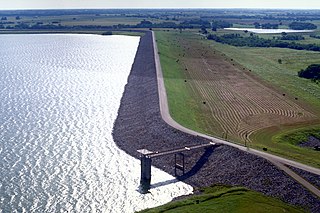
Lake Bardwell is a lake in Ellis County, Texas. The lake was constructed by the United States Army Corps of Engineers in 1965. Lake Bardwell is not used for military operations, and is accessible to the public for recreational purposes; it has seven facilities, but the state public ramp is closed.
The Little Sandy National Wildlife Refuge is National Wildlife Refuge of 3,802 acres in Wood County, Texas. Unlike most National Wildlife Refuges maintained by the U.S. Fish and Wildlife Service, the public is not allowed access to the refuge. The land is privately owned, but protected by a conservation easement.
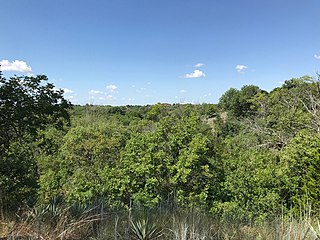
The Fort Worth Nature Center & Refuge is a nature center located between Lakeside and Lake Worth, Texas within Fort Worth, Texas, United States city limits. It consists of prairies, forests, and wetlands. The nature center offers a glimpse of what the Dallas–Fort Worth metroplex looked like before settlement. The center covers 3,621 acres (1,465 ha) and includes over 20 miles (32 km) of hiking trails. It is one of the largest city-owned nature centers in the United States.
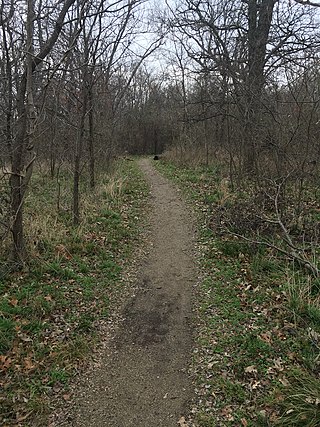
Lewisville Lake Environmental Learning Area, or LLELA, is a 2,600-acre park in Lewisville, Texas. It features Blackland Prairie and Eastern Cross Timbers ecosystems, as well as wetlands and hardwood forests. The Elm Fork branch of the Trinity River runs through the park, and it is adjacent to Lake Lewisville, although there is no lake access from the park.
References
- ↑ "One Of The Nation's Biggest Urban Forests Isn't Where You'd Expect". NPR . 2019-08-20.
- ↑ "Dallas Wants to be a Green City, So Why Not Save Some Trees?". 2009-03-19.
- ↑ "Dallas vows, again, to protect the Great Trinity Forest, but what does that even mean?". Dallas News. 2019-05-24. Retrieved 2023-05-18.
- ↑ "Dallas vows, again, to protect the Great Trinity Forest, but what does that even mean?". Dallas News. 2019-05-24. Retrieved 2023-05-18.
- ↑ Schutze, Jim. "The Great Trinity Forest Ain't So Great". Dallas Observer. Retrieved 2023-05-31.
- ↑ "This Place in the Woods – The Great Trinity Forest". DFW Urban Wildlife. 2023-02-16. Retrieved 2023-05-31.
- ↑ Lamster, Mark (June 29, 2023). "The 50-mile Dallas Loop trail aims to transform the city. It's getting there". Dallas Morning News. Retrieved June 29, 2023.
- ↑ Martin, Amy (13 May 2020). "Paved Trinity Forest Trail connects natural landmarks". Green Source DFW.